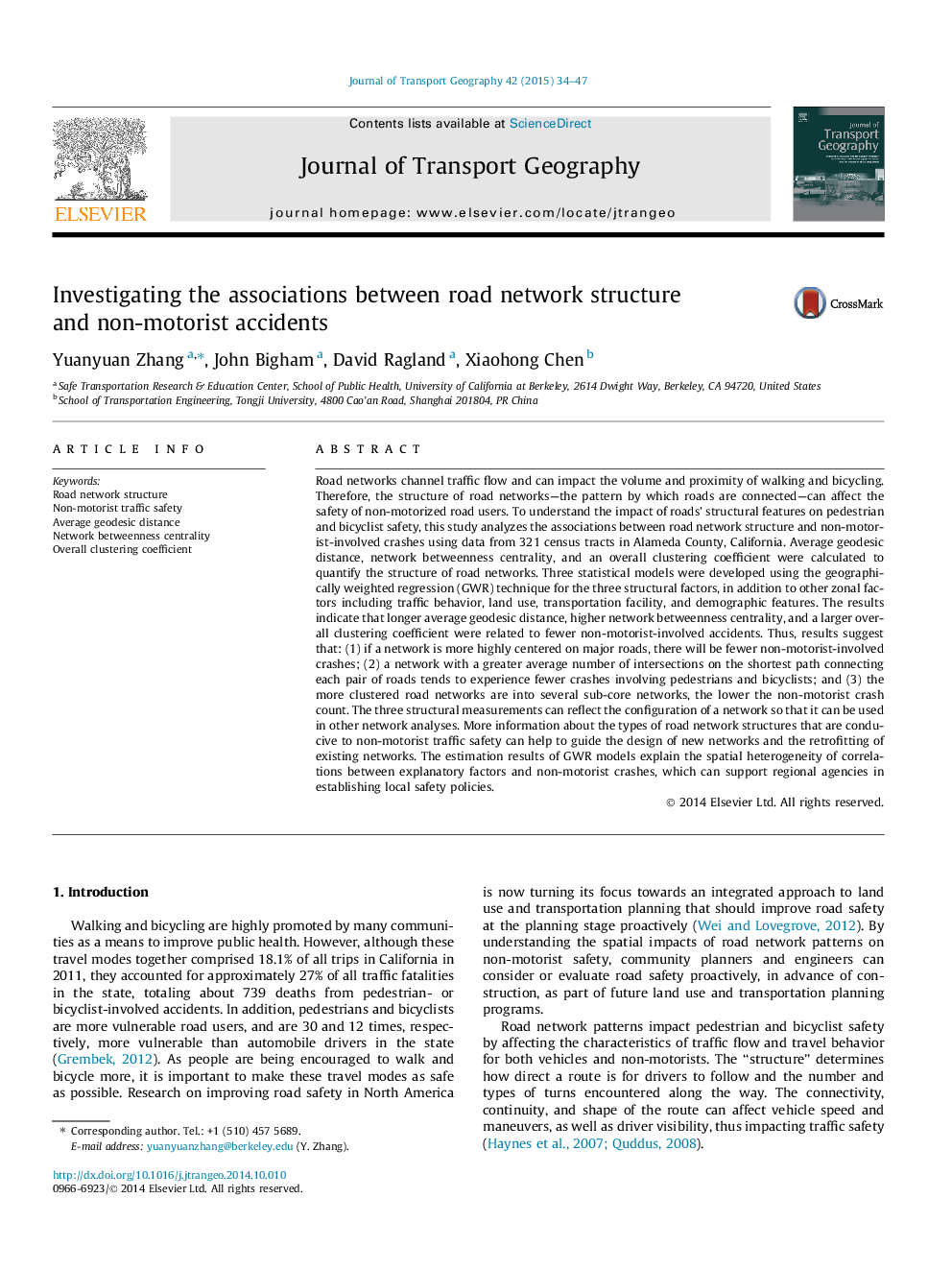| کد مقاله | کد نشریه | سال انتشار | مقاله انگلیسی | نسخه تمام متن |
|---|---|---|---|---|
| 1059174 | 1485425 | 2015 | 14 صفحه PDF | دانلود رایگان |
• Road network structure can impact traffic safety for non-motorized road users.
• Road network with more intersections between pairs of roads tend to be safer.
• More centered networks tend to be safer for non-motorists.
• The more clusters a network has the fewer accidents for pedestrians and bicyclists.
• Geographically weighted regression (GWR) is used to investigate the impacts.
• The impacts of structural measures vary across census tracts.
Road networks channel traffic flow and can impact the volume and proximity of walking and bicycling. Therefore, the structure of road networks—the pattern by which roads are connected—can affect the safety of non-motorized road users. To understand the impact of roads’ structural features on pedestrian and bicyclist safety, this study analyzes the associations between road network structure and non-motorist-involved crashes using data from 321 census tracts in Alameda County, California. Average geodesic distance, network betweenness centrality, and an overall clustering coefficient were calculated to quantify the structure of road networks. Three statistical models were developed using the geographically weighted regression (GWR) technique for the three structural factors, in addition to other zonal factors including traffic behavior, land use, transportation facility, and demographic features. The results indicate that longer average geodesic distance, higher network betweenness centrality, and a larger overall clustering coefficient were related to fewer non-motorist-involved accidents. Thus, results suggest that: (1) if a network is more highly centered on major roads, there will be fewer non-motorist-involved crashes; (2) a network with a greater average number of intersections on the shortest path connecting each pair of roads tends to experience fewer crashes involving pedestrians and bicyclists; and (3) the more clustered road networks are into several sub-core networks, the lower the non-motorist crash count. The three structural measurements can reflect the configuration of a network so that it can be used in other network analyses. More information about the types of road network structures that are conducive to non-motorist traffic safety can help to guide the design of new networks and the retrofitting of existing networks. The estimation results of GWR models explain the spatial heterogeneity of correlations between explanatory factors and non-motorist crashes, which can support regional agencies in establishing local safety policies.
Journal: Journal of Transport Geography - Volume 42, January 2015, Pages 34–47
